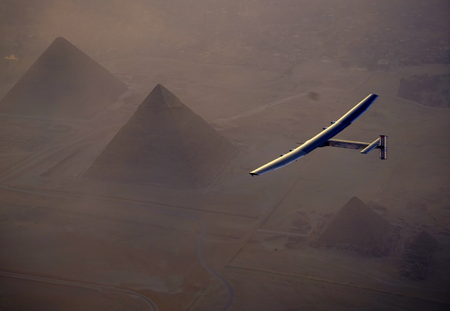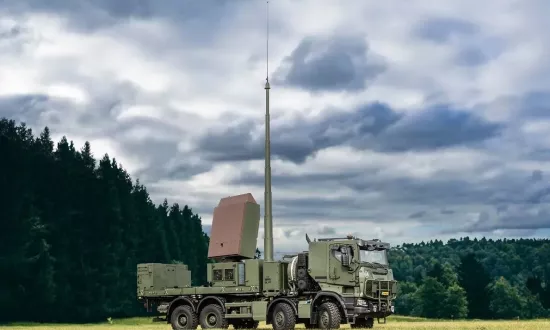Together in Electric (Aviation) Dreams
Sustainable aviation has seen some major advancements over the years. But just how realistic is an electric or hybrid-electric commercial airline? Darryn (Daz) Rawlins, Managing Director, Thales Training and Simulation, UK, looks at the key technical challenges developers face, both on the ground and in the air.
Browsing through September’s edition of the Aeronautical Society magazine, I was struck by Bill Read’s article, Wiring up the electric aviation revolution. In it, he explores the financial challenges faced by electric and hybrid-electric aircraft manufacturers as they bring their products to market. In this article, I want to at the look who’s currently leading the charge, as well as some of the technical challenges.

The future may be electric…
Sustainable aviation has seen some major advancements over the years. Take the Solar Impulse 2 for example. It took 23 days and 16 stops to circumnavigate the earth using only solar energy to power its four lithium-ion electric engines. While it was never meant to be a commercial endeavour (apart from for the sponsors), the aircraft captured the world’s imagination and showed the capabilities and potential of renewable energy in aviation. As technology has advanced, so has appetite for, and investment in, electric vehicles. We’ve seen huge strides in the power and range of EVs (electrical vehicles) in the last decade and, more recently, in the electrification of the rail network.
…but the aviation industry is playing catch-up
So while we’re probably a long way from a commercially-sound EA (electric aircraft) airline, it seems the wind is beginning to blow in that direction. Thales itself has already struck a few wins in helping commercial airlines improve fuel consumption, punctuality and passenger comfort, and as a key player in the aviation industry we continue to call for the integration of a green aircraft in the European recovery plan.
But based on the investment flowing into developing electric propulsion, the commercial electric aircraft industry, while not ready to take off yet, has left the departure gate and is slowly taxiing towards the runway.
And it’s already had some notable successes. Take Ampaire’s testbed aircraft, the hybrid Electric EEL. It’s a retro-fitted Cessna 337 Skymaster and brings astonishing savings – 50-70% in fuel and 25-50% in maintenance. And closer to home, we have Cranfield Aerospace Solutions (CAeS) and its plans to compete in the emerging ‘green’ electric-powered aircraft sector. In Project Fresson, it aims to refit a nine-seat twin-engine Britten-Norman Islander with an electric propulsion system, supported by a conventional motor in case of emergency.
Governments are getting behind the idea of environmentally-friendly commercial aviation too, with France aiming to debut a carbon-neutral aircraft by 2035 and the UK vowing to be the first to develop a zero-emission long-haul passenger aircraft.
As mentioned, a big overhead in the aviation industry is fuel. Reduce that using electric or hybrid-electric engines and air travel will become a lot cheaper, a lot quieter, and a lot more environmentally friendly. While the commercial aviation industry is yet to have the revolutionary commercial breakthrough like Tesla had with its 2005 Roadster, plane manufacturers are at least slowly evolving their aircraft systems to move from pneumatic and hydraulic systems to electric powered ones. This is another area where Thales is leading the charge in greener aviation, and where every little saving in weight or fuel helps.

Ports in airports
But while we wait for the all-important all-electric-propulsion plane what challenges does the commercial aviation industry face? A major one is infrastructure. In the same way EV drivers bemoan a lack of charging ports around the country, pilots will be doing the same unless there’s a major upgrade to airports around the world.
Certifiably tough
Another challenge is safety certification. Aviation is rightly one of the most certificate-heavy industries in the world due to the importance of air-worthiness, and civil aviation authorities look to achieve high standards. What happens if there’s a lightning strike, for example? Or an electric fire?
Challenging by design
Another challenge is aircraft design. Passenger aircraft are finely tuned when it comes to weight and balance. In an electric vehicle, you generally accept you’re going to have to sacrifice some room and weight to accommodate the battery. But is this even possible in an aircraft the size of a 787 Dreamliner, or will it infringe on the available space available for either luggage or for passengers so much, it no longer becomes commercially viable?
We know the weight of the aircraft is critical to its performance, so how will this affect the length of runway, which in turn is affected by altitude and temperature? Which prompts the question: are you going to be restricted in landing weight or take off weight, because of the battery weight, or is this offset by the fuel you're not carrying?
How green is green?
And if I’m playing devil’s advocate, another challenge will be to really measure how ‘green’ the actual battery technology is. Everybody talks about how environmentally friendly electric vehicles are, but if we’re trawling the ocean floors for cobalt or causing huge environmental damage to extract lithium from mines to make batteries, then it’s clearly not environmentally friendly. In 50 years, will we be looking at this as another terrible idea, like we did with leaded petrol or diesel engines?
In trying to solve one sustainability problem, are we creating another downstream where we don't know what the second or third order consequences might be?
Elon Musk raised this exact point. Which is why Tesla’s looking to remove cobalt from its batteries, for example. But again, it's understanding the potential consequences of replacing one material with another.
TeslAir anyone?
And talking of Musk, at Tesla’s Battery Day a few months ago, he announced plans to develop a 'million-mile' battery. The ambition is as staggering as it is exciting, and we can only hope one day he might turn his attention from the road to the skies with a 100% electric-powered Tesla aircraft. After all, if you can crack the battery power-to-weight ratio, you’ve probably solved the biggest problem in electric-powered aviation.


